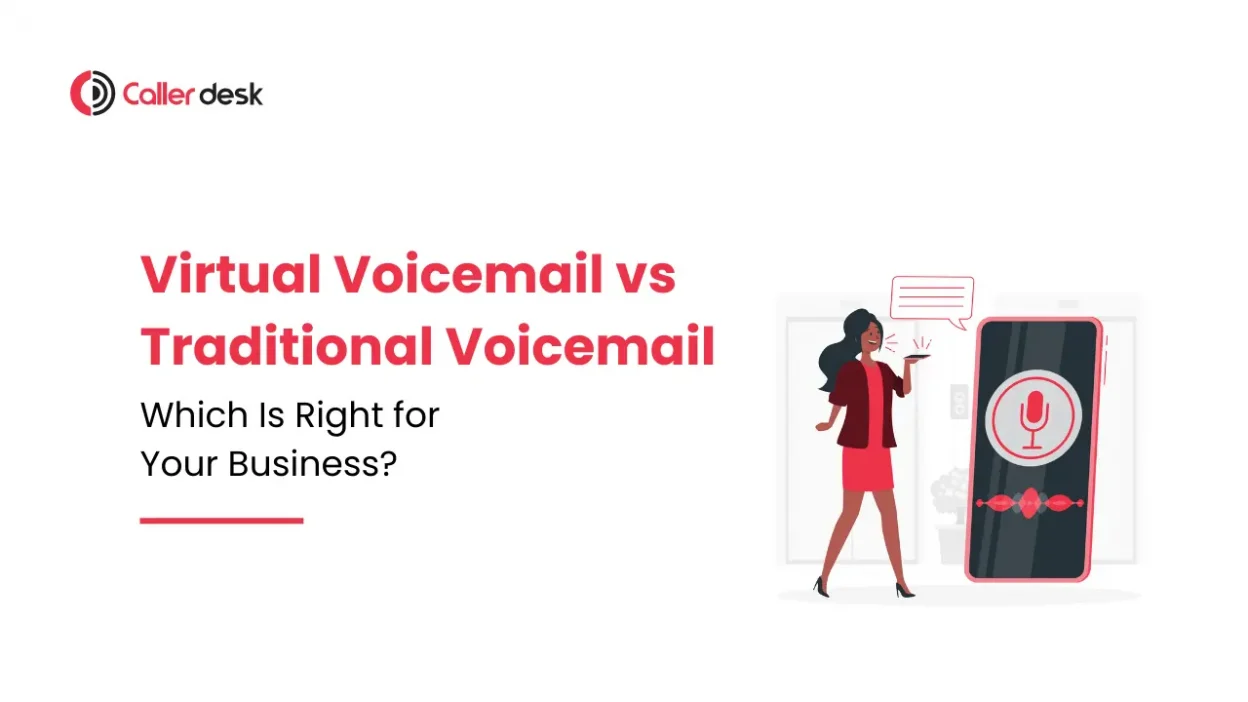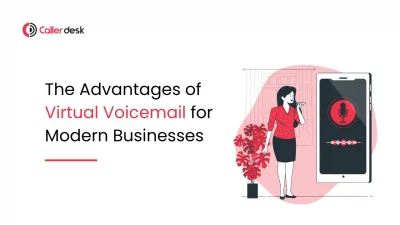In the world of business communication, voicemail remains a vital tool for call centers and enterprises. However, with advancements in cloud telephony, businesses now have the option to choose between virtual voicemail and traditional voicemail. Understanding the differences between these two systems can help your business make an informed decision.
What is Traditional Voicemail?
Traditional voicemail, usually part of landline systems, stores voice messages on a physical server. When someone leaves you a message, it’s saved locally. To listen to it, you have to dial into your voicemail box, which can be pretty inconvenient and time-consuming.
What is Virtual Voicemail?
Virtual voicemail, a feature of modern cloud telephony, stores your messages in the cloud. This means you can access them from anywhere using the internet. You can get your messages delivered straight to your email or even have them transcribed into text, making it more flexible and efficient.
Key Differences Between Virtual Voicemail and Traditional Voicemail
1. Accessibility
Traditional Voicemail: Access is limited to the device connected to the voicemail system, often requiring users to dial a specific number and enter a passcode.
Virtual Voicemail: Offers remote access from any device with an internet connection. Users can check messages via email, mobile apps, or web portals, enhancing accessibility and convenience.
2. Storage and Management
Traditional Voicemail: Limited storage capacity tied to the physical server. Once the storage limit is reached, users must delete messages to make room for new ones.
Virtual Voicemail: Virtually unlimited storage capacity as messages are stored in the cloud. This allows businesses to keep extensive records without worrying about storage limits.
3. Features and Integration
Traditional Voicemail: Basic functionality with limited integration capabilities. Usually operates independently from other communication tools.
Virtual Voicemail: Advanced features such as message transcription, integration with CRM systems, and the ability to forward voicemails via email. These features enhance productivity and streamline communication workflows.
4. Reliability and Maintenance
Traditional Voicemail: Needs regular maintenance for physical servers and can be prone to hardware issues.
Virtual Voicemail: Minimal maintenance as the service provider handles updates and upkeep. The cloud-based system ensures higher reliability and less downtime.
5. Cost
Traditional Voicemail: Typically, this can be more expensive because of the costs associated with maintaining hardware, limited ability to scale, and the need for dedicated IT support.
Virtual Voicemail: Generally more cost-effective as it eliminates the need for physical infrastructure and offers scalable solutions that grow with your business.
Which is Right for Your Business?
Virtual Voicemail: Ideal for call centers and businesses seeking advanced features, such as message transcription and easy integration with other tools. It offers enhanced accessibility, cost savings, and improved efficiency. A great choice for those looking to upgrade and streamline communication.
For Example: A tech support company handles a high volume of calls and needs advanced features. Virtual voicemail provides message transcription, allowing team members to quickly read and respond to messages, and integrates seamlessly with their CRM system, improving overall efficiency and customer service
Traditional Voicemail: Suitable for businesses with minimal voicemail needs and existing investments in traditional systems. It’s a reliable option if you’re not looking to add advanced features or change your current setup.
For Example: A local retail receives a few voicemails each week and doesn’t require advanced features. Their existing traditional voicemail system is straightforward and sufficient for their needs, making it a cost-effective choice without the need for upgrades.
Conclusion
Choosing between virtual voicemail and traditional voicemail depends on your business’s specific needs and goals. For those looking to adopt modern technology, improve efficiency, and integrate advanced communication features, virtual voicemail is clearly the best choice.



